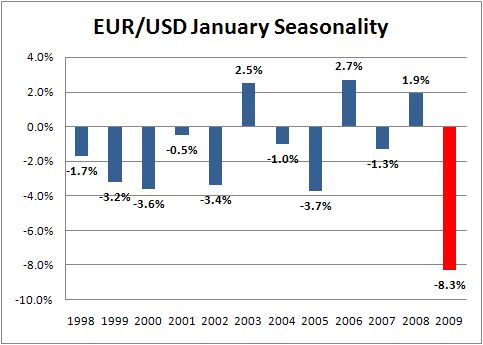| What Is Unique In Forex About February? |
| By Kathy Lien |
Published
02/2/2009
|
Currency
|
Unrated
|
|
|
|
What Is Unique In Forex About February?
In the beginning of January, I highlighted the effect of seasonality on the EUR/USD. At that time, I talked about how the EUR/USD has a natural bias to sell-off in the first month of the year as investors reverse their year end flows. Since 1997, the EUR/USD has sold off in the month of January 72.7 percent of the time. If we include the currency pair’s price action in 2009, the EUR/USD has now sold off 75 percent of the time in January. The combination of falling interest rates in the Eurozone, recession and a flight to safety into US dollars has led to the strongest January sell-off in the EUR/USD in more than a decade.

February Performance
Now that January is behind us, many forex traders may be wondering if there are any unique characteristics in the currency market for the month of February. Taking a look at more than 30 years worth of data, we have found that on average the trading range in USD/JPY tends to compress in the second month of the year. In fact, of all 12 months, the average trading range in USD/JPY is lowest in February. Lower volatility could mean stability for USD/JPY because high volatility hurts Yen crosses (A Turn in USD/JPY?).

Currency Performance Since January
The final chart (after jump) illustrates how all of the major currencies have performed against the US dollar in January. So far, the Japanese Yen has been the only currency to outperform the greenback.
Kathy Lien is Director of Currency Research at GFT, and runs KathyLien.com.
|